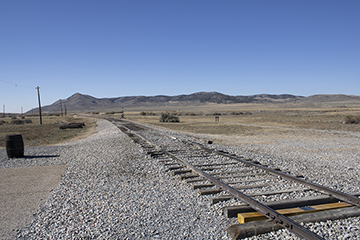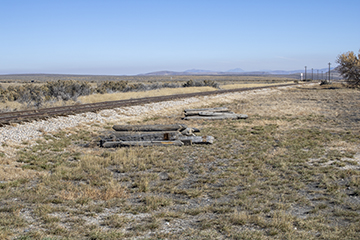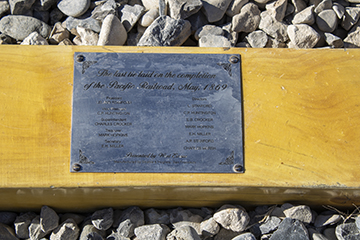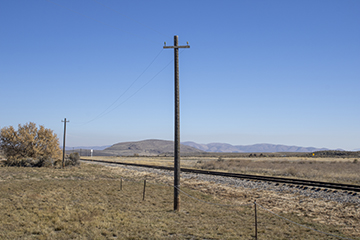
Looking west from Promontory Summit
|
The Central Pacific had the tougher of the routes. It took a tremendous amount of work and lives to get the railroad up and over the Sierra Mountains. They employed mostly Chinese because they were cheaper and judged to be capable workers. The Central Pacific ended up building 690 miles of track compared to 1087 miles for the Union Pacific but they had an easier time with their route going through the plains. |

Looking east from Promontory Summit
|

The commemorative plaque at golden spike location
|
They both finally joined up at Promontory Summit on May 10th, 1869 with much attention and fanfare Leland Stanford drove the golden spike to complete the first intercontinental railroad in the U.S.A. It my understanding that there were actually 4 final spikes, 2 gold and 2 gold/silver plated. The plated ones are in private collections, 1 of the gold ones is on display at a museum in the bay area and the last one has been lost to history. I was told by a NPS ranger that it disappeared in the 1906 San Francisco earthquake. |

The Final Tie
|

Telegraph lines were also installed.
|
It was president Lincoln that insisted that telegraph lines be installed, giving the United States instant coat to coast communications.
These days you can visit this historic site and also see the 2 replica locomotives they have on site. |

One of the replica locomotives.
|

